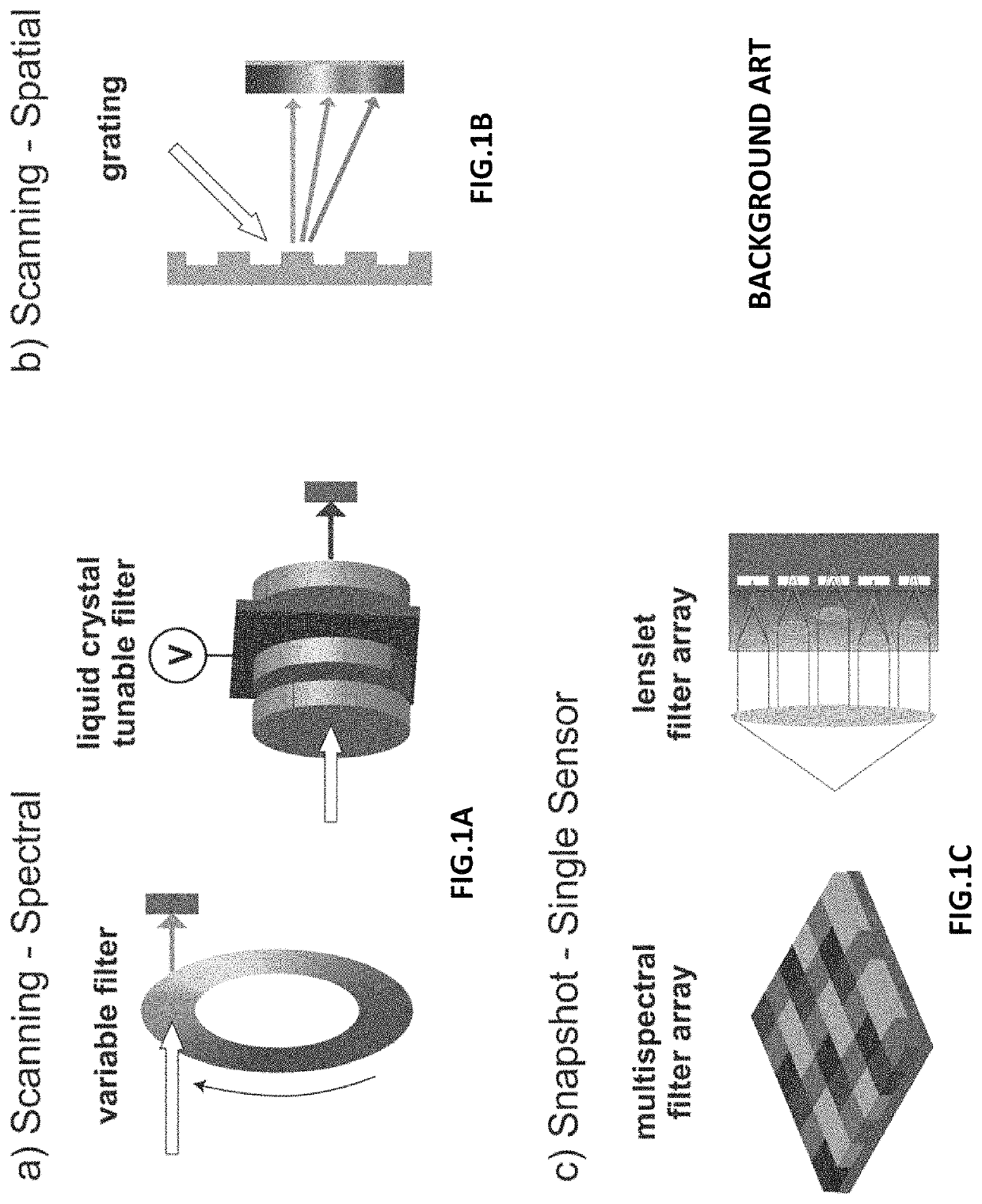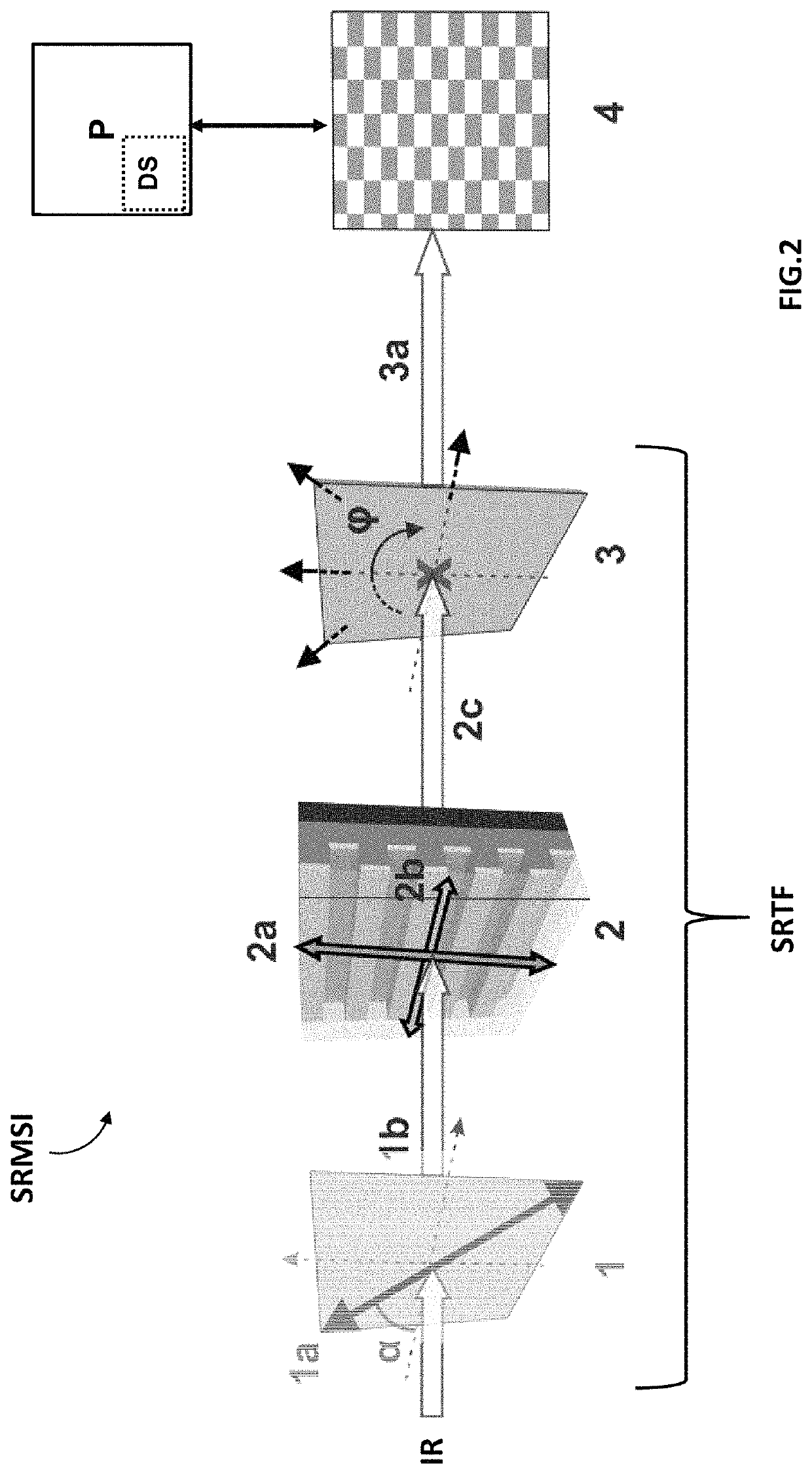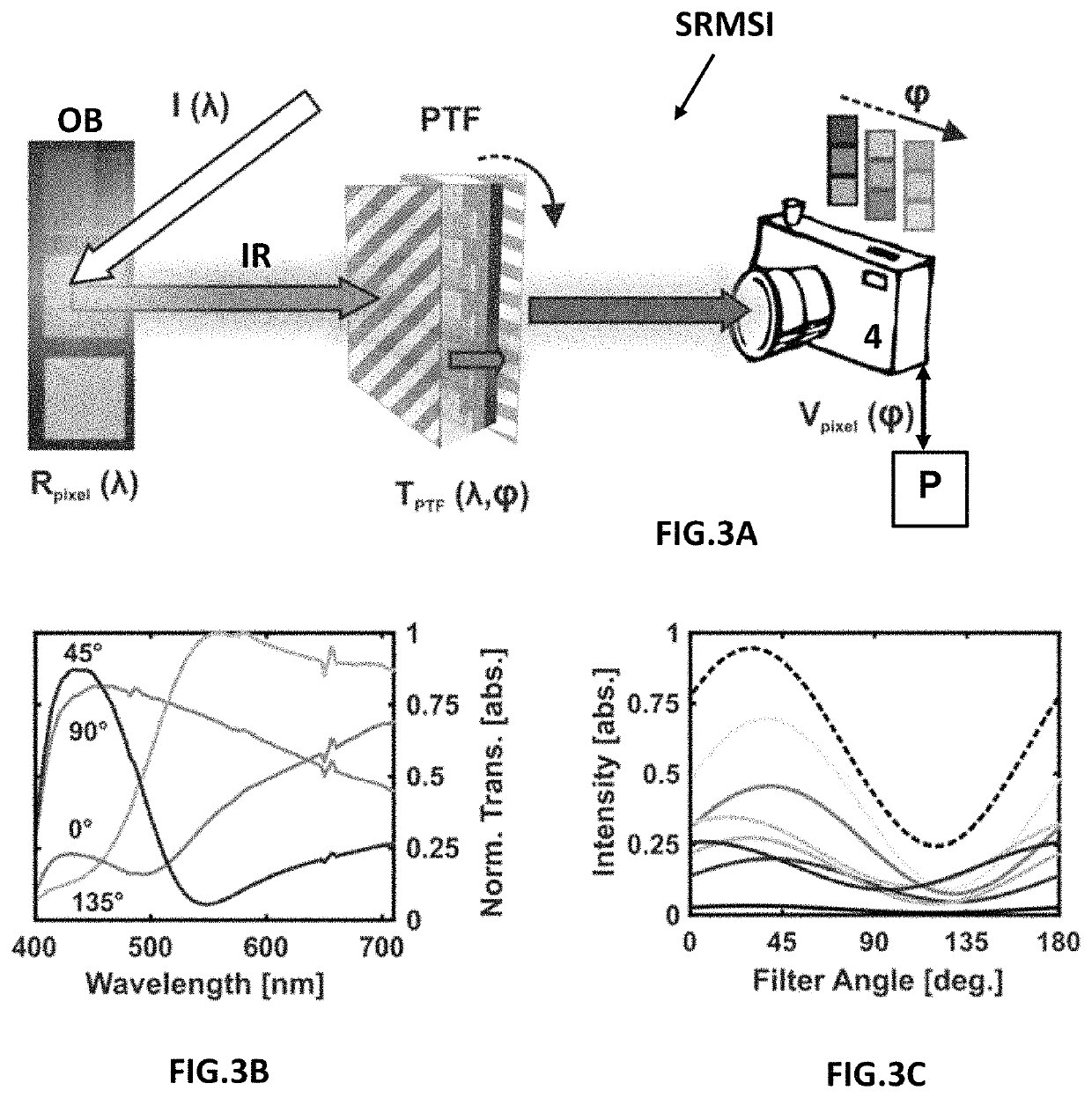Multispectral or hyperspectral imaging and imaging system based on birefringent subwavelength resonating structure
a subwavelength resonating structure and multi-spectral imaging technology, applied in the field of tunable optical filters and imaging systems, can solve the problems of limiting the range of applications, requiring bulky and heavy parts or significant volume for spectral filtering, and affecting the field-dependent use of specific instrument types
- Summary
- Abstract
- Description
- Claims
- Application Information
AI Technical Summary
Benefits of technology
Problems solved by technology
Method used
Image
Examples
Embodiment Construction
[0097]FIGS. 2 and 3A show one aspect of the present disclosure, depicting a tunable optical filter SRTF and an imaging system SRMSI including the tunable optical filter SRTF.
[0098]The imaging system SRMSI can be, for example, a multispectral imaging or hyperspectral imaging system. The tunable optical filter SRTF can include an entrance or input polarizer 1, a phase retarder or a birefringent subwavelength resonating structure (BSRS) 2, and an analyzing polarizer 3. The imaging system SRMSI includes the tunable optical filter SRTF and an imaging sensor, imaging system or device, camera, or photodiode 4.
[0099]The input polarizer 1 is configured to receive incident electromagnetic radiation IR incident from an object OB, and is configured to produce, for example, linearly polarized electromagnetic radiation.
[0100]The phase retarder or birefringent subwavelength resonating structure (BSRS) 2 includes an anisotropic metallic or dielectric structure, for example, periodic and with spatia...
PUM
| Property | Measurement | Unit |
|---|---|---|
| thickness | aaaaa | aaaaa |
| thickness | aaaaa | aaaaa |
| thickness | aaaaa | aaaaa |
Abstract
Description
Claims
Application Information
 Login to View More
Login to View More - R&D
- Intellectual Property
- Life Sciences
- Materials
- Tech Scout
- Unparalleled Data Quality
- Higher Quality Content
- 60% Fewer Hallucinations
Browse by: Latest US Patents, China's latest patents, Technical Efficacy Thesaurus, Application Domain, Technology Topic, Popular Technical Reports.
© 2025 PatSnap. All rights reserved.Legal|Privacy policy|Modern Slavery Act Transparency Statement|Sitemap|About US| Contact US: help@patsnap.com



